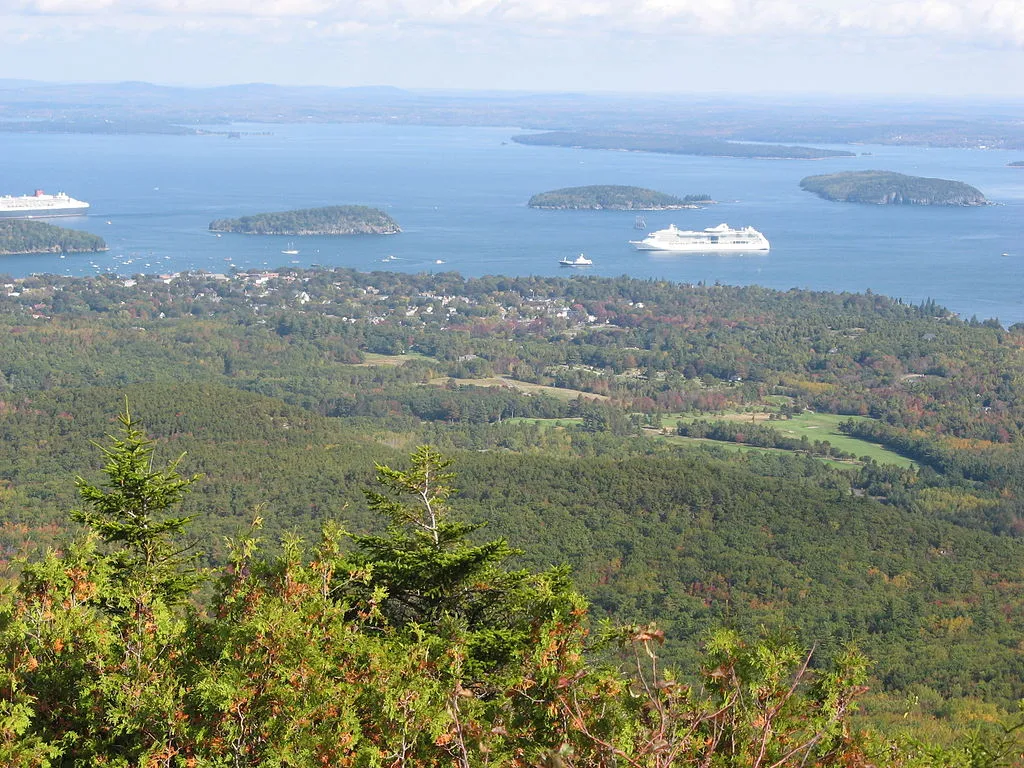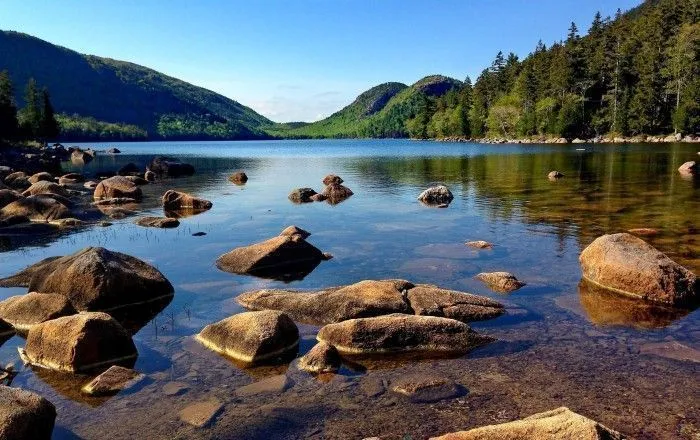Acadia is a US national park in the state of Maine, located on Mount Desert Island, as well as nearby islands. In total, the park occupies 192 km 2 of territory, the main part of which is on Mount Desert Island - 123 km 2.
 |
| Acadia National Park |
Judging by the archaeological finds, people first appeared here as early as 6000 years ago. Since ancient times, the Indians of the Wabanaki tribe lived here, who were engaged in fishing and hunting. The first Europeans visited here in 1605, when the crew of the French expedition landed here, led by Samuel de Champlain, who later founded several settlements in Canada. In the 19th century, these places were chosen by artists, including Thomas Cole and Frederick Church, who especially appreciated the beauty of nature. By 1880, tourism became the main activity for the island, with 30 hotels built here. In 1916, the Sieur Demont National Monument was founded here, which in 1919 became Lafayette National Park. Acadia Park received its current name in 1929. In 1947, a severe fire broke out on the island, destroying 40 km 2 of forest.
 |
| Acadia National Park |
The coast of Acadia, like the entire state of Maine, was formed under the influence of a glacier, which destroyed the mountain range, and when it melted, it formed the Gulf of Maine. Under the pressure of the glacier, the Soames Sound Fjord appeared, which is the only fjord on the Atlantic coast of the United States. Almost the entire coast of Acadia National Park is rocky, with rocky and rarely sandy beaches. Earthquakes are not uncommon in this area, from 1747 to 1992 there were 507 earthquakes. Although the territory of Acadia Park is small, different natural reliefs are arranged: mountain ranges with beautiful lakes, dense forests of pine and spruce, in which swamps occur, sandy beaches. Almost the entire central part of Mount Desert Island is covered with mountains, the highest point of which is Mount Cadillac 466 meters high.
Acadia Park is located at the intersection of climatic zones, so here you can see coniferous forests typical of the northern territories and broad-leaved forests for the southern ones. A significant part of the park is covered with pine and spruce forests, in places there are deciduous forests of oak, beech, and maple, characteristic of New England. On the northeastern border of Acadia Park, unique, isolated forests of pine and dwarf oak can be seen. In the southern part, Blanca pine is found, which did not spread further south. Almost the entire forest is being revived after a fire, due to which poplar and birch forests have become more common, but coniferous forests grow more slowly.
 |
| Acadia National Park |
In the Acadia National Park, there are several dozen mammals, among which it is worth noting coyotes, virgin deer, foxes, raccoons, hares, and otters. There are also many rodents in the park, like woodchucks, chipmunks, beavers, long-tailed porcupines, squirrels, moles. Sometimes bears, elks, lynxes visit these places, and in coastal waters you can see whales, dolphins, seals. The rivers and lakes of the park are rich in fish, of which there are 28 varieties. In 1984, a program was launched to restore the number of peregrine falcons, in the 1960s they were on the verge of extinction.
In 2006, Acadia was in tenth place in terms of popularity among travelers, behind such national parks as the Grand Canyon, Yellowstone, Zion, Arches. Most of the park's guests come here from July to September.
